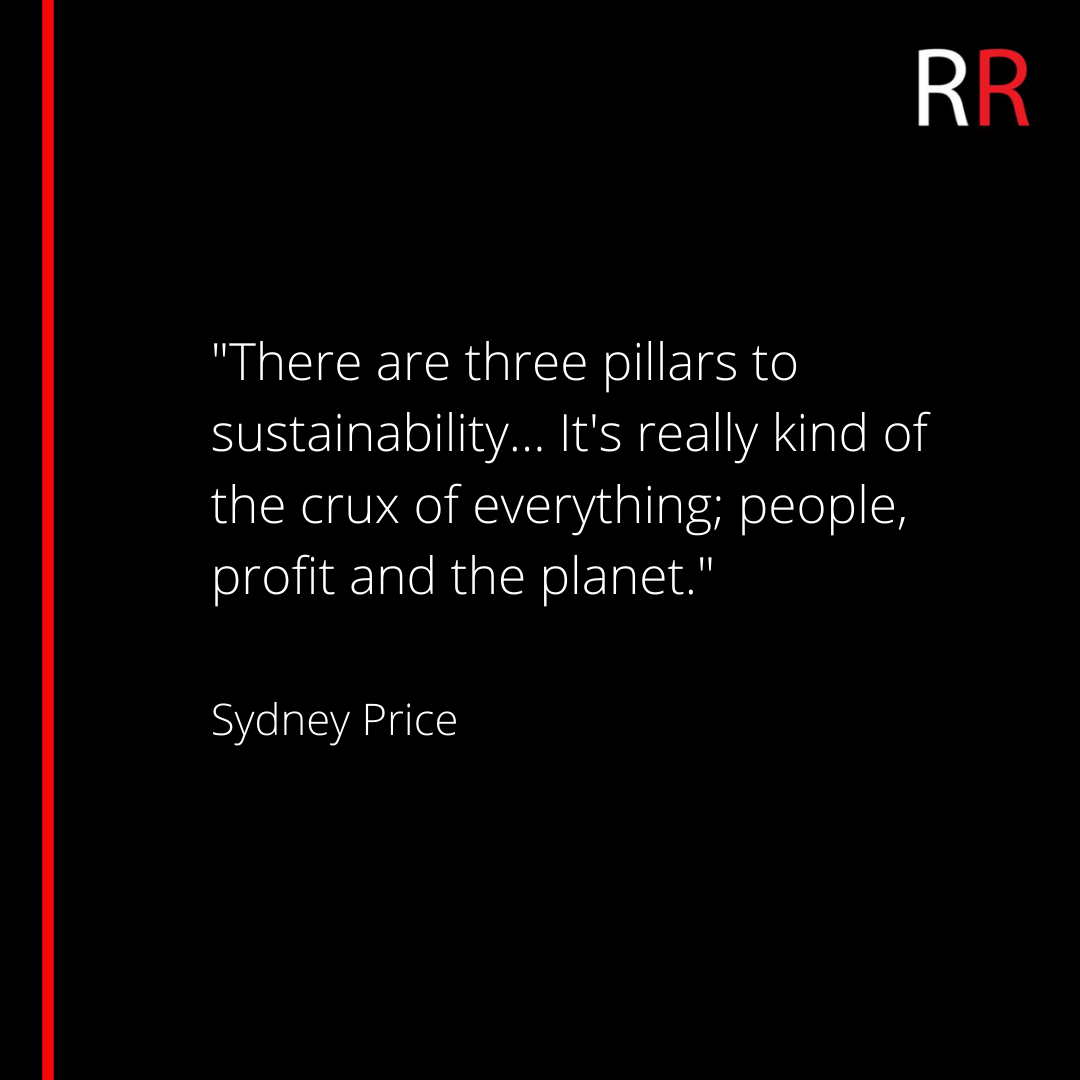Top 3 Things Industry Professionals Are Saying About Sustainability
Nowadays, sustainability and circularity have become interchangeable buzzwords which has created confusion in determining which brands are and aren’t greenwashing. In the fourth season of Retail Revolution, author and educator, Sass Brown added, “Sustainability and circularity are so grossly misunderstood and misused now... There's a real loss of the complexity and the diversity and the real meaning of the issue.”
1. We should consider the three pillars of sustainability
There is more to sustainability than some may think. More specifically, there’s multiple layers to sustainability that both brands and consumers must consider. Sydney Price, founder and CEO of The Knew Purpose and a professor at Parsons, The New School for Design, describes the three pillars best, “There are three pillars to sustainability… It's really kind of the crux of everything, is people, profit and the planet. So, when you think of people, it's the social responsibility. Also, social equity… how are you treating your employees and your stakeholder’s wellbeing? And are you tapping into fair trade? When you look at profit as a pillar, it's really, are you utilizing the best economic practices that maximize long-term profitability and promote growth? And then the planet, you're thinking you really need to use the idea of environmental protection. And are you conserving natural resources?"
2. Brands should share not only their sustainability journey, but also their mistakes
“Sustainability” is often thrown around as a buzzword in the industry, and it can reek of greenwashing. In the way that some brands communicate, it seems to the consumer as if with a flip of a switch the brand can suddenly become more ethical and sustainable. But if that were truly the case, the industry would have been sustainable a long time ago. The supply chain is a complex system, and the more brands are transparent about their journey and mistakes towards a more sustainable future, the better it is for their relationship with the customer. Creative strategist, AJ Lacoutte states “You just can't show up on the scene one day and be like, ‘Hey, we're sustainable now’... that stinks of greenwashing. And people are going to call you out on that. Get people on your side and share that story and that journey, your mistakes, your wins. Don't be like Everlane and trip on your own green halo.”
3. You don’t have to shop sustainably to support sustainability
Although 65% of consumers want to buy purpose-driven and sustainable brands, only about 26% actually do so, according to one Harvard Business Review survey. On average, sustainable brands can be 30 to 40% more expensive than their non-sustainable counterparts so that creates a challenge and an accessibility problem for some consumers. For example, this poses a hurdle for consumers who have a limited disposable income. Samata Pattinson, CEO of Red Carpet Green Dress, advises consumers that money is not the only way to support sustainable brands. “I think you can support a brand without buying from them. You can tell other people about a brand without being able to afford it yourself, so that there is an ability to share regardless of what you can participate in that particular brand or not,” said Pattinson. “But what I always say, like my tips to people that want to participate in the conversation, a really kind of along the lines of questioning, the brands that you do frequent.”
Written by Maria Soubbotina




